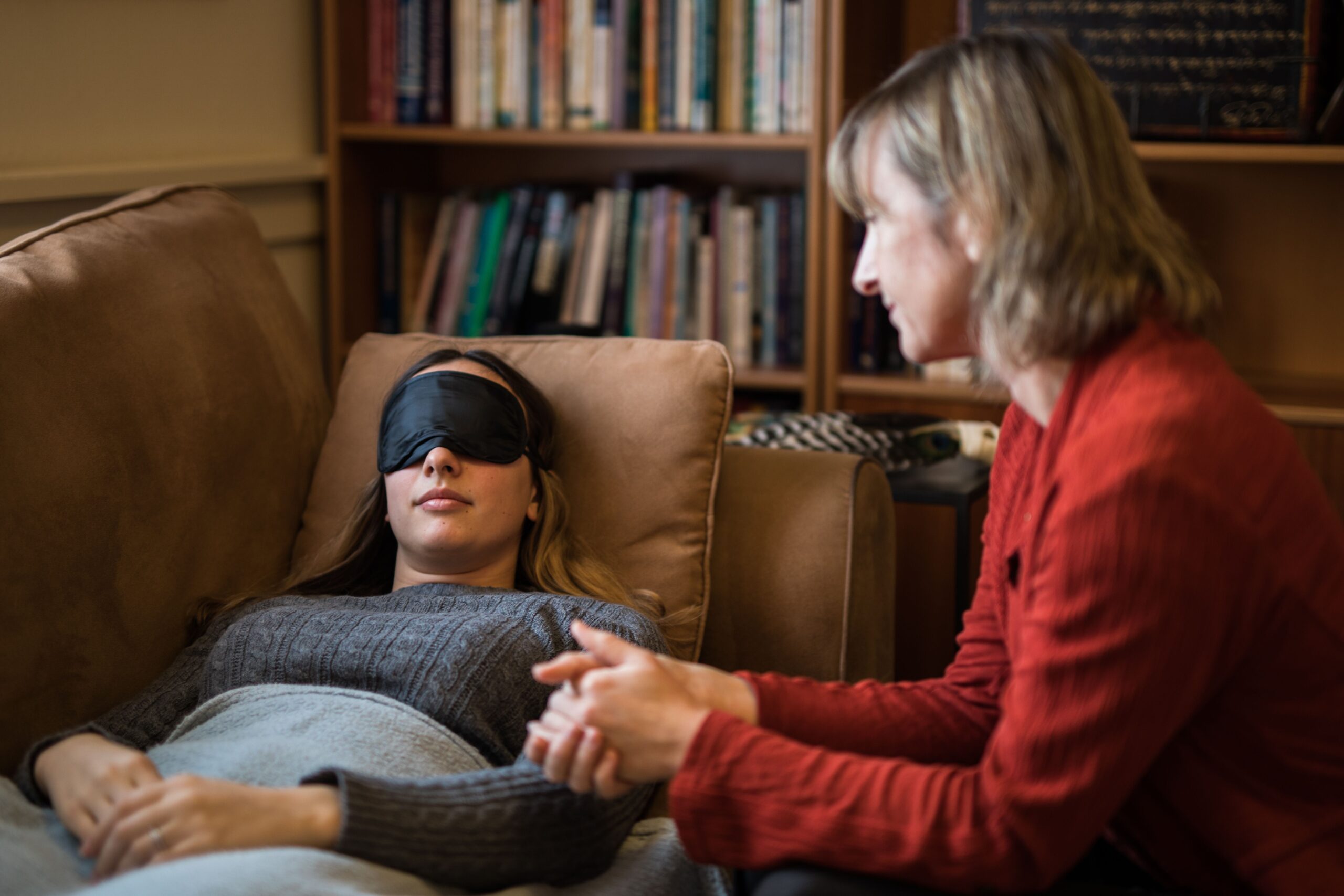Before the rise of classic psychedelics like LSD, psilocybin and MDMA for their therapeutic potential, ketamine, a drug long used as an anesthetic dating back to the battlefields in the Vietnam War, emerged as a breakthrough depression treatment.
Starting in the early 2000s, its effectiveness in treating severe, stubborn depression, including cases with suicidal thoughts, caught researchers’ attention.
By the mid-2010s, the United States saw a surge in ketamine clinics, offering the drug off-label to those with depression that didn’t respond to standard treatments. Initially, many clinics operated with minimal involvement from mental health experts, relying instead on anesthesiologists for administering treatments and follow-up care.
These treatments, often expensive and not covered by insurance, typically involved a two-week course of six intravenous infusions, followed by monthly or as-needed booster sessions. Doctors might also prescribe ketamine lozenges for use at home between booster infusions. However, the rise of telemedicine services like Mindbloom, offering at-home ketamine treatments, has sparked debate over these practices, especially following the death of actor Matthew Perry, who had been undergoing ketamine therapy.
Amid concerns over its potential for misuse, ketamine is also being explored as a treatment for drug and alcohol addiction. Psychedelic Medical News discussed the integration of ketamine into addiction treatment with Inna Zelikman, deputy medical director at Recovery Without Walls, a clinic in Mill Valley, California, focusing on outpatient addiction treatment and pain management.
Below is an edited version of her emailed responses.

PMN: What does current research show regarding the potential benefits of ketamine for drug-addiction treatment? Hasn’t it primarily been used for treatment-resistant depression and suicidal ideation?
IZ: Possible mechanisms by which ketamine may work within addiction include enhancement of neuroplasticity and neurogenesis, disruption of relevant functional neural networks, treating depressive symptoms, blocking reconsolidation of drug-related memories, provoking mystical experiences and enhancing psychological therapy efficacy.
PMN: How can ketamine-assisted psychotherapy be utilized to address addiction to other drugs?
IZ: Administration of ketamine in the therapeutic setting can enhance psychotherapy. Ketamine effects can provide a unique mental state that facilitates and enriches therapeutic experiences, which in turn may improve efficacy and lengthen treatment effects. The uptake of psychological therapy may therefore be facilitated after ketamine administration due to an increase in synaptogenesis and neurogenesis and thus improved learning of relapse-reducing strategies.
PMN: How does ketamine-assisted therapy differ from traditional addiction treatment approaches?
IZ: Traditional addiction treatment approaches focus on psychoeducation about drug use leading to unhealthy behavioral patterns. CBT focuses on cognitive distortions and engages addicts in recognizing and changing their cognitive believes. However, it does not fully address the underlying cause of addiction. Mental illness, which often develops as the result of trauma, creates a narrative by which addicts view or experience the world. People in recovery continue to struggle with unresolved issues that they were medicating with substances.
Ketamine-assisted psychotherapy (KAP) creates a state that allows for processing of unresolved trauma, proper grieving, helping patients look at their situation from a different perspective. Often, addiction leads to isolation and disconnect from their community. KAP can reopen critical periods to re-establish social connection, thus improving their relationships. In addition, people in recovery need a strong spiritual connection to achieve a full transformation, and KAP can sometimes create that kind of mystical experience.
PMN: Are there specific populations or substances for which ketamine-assisted therapy is more effective in addressing addiction?
IZ: There has been a plethora of research on KAP supporting its effectiveness in the treatment of alcohol use disorder. However, it can be just as effective in the treatment of other addictions, as it can minimize withdrawal symptoms and emotional distress produced by the use of substances. KAP can address the unresolved issues that underlie substance use. Its effectiveness increases if it is properly supported or combined with other treatment approaches that are implemented at the same time. For instance, opioid use disorder is best treated with the combination of buprenorphine and KAP.
PMN: What are some of the potential risks of ketamine administration, in particular at-home treatment?
IZ: There is a higher risk of ketamine diversion with at-home prescribing. Many practices feel that it is safe to prescribe at-home ketamine since they were able to test it out on their patients in clinical setting. However, supervised treatment has a different effect on patients than at-home administration. Often, online ketamine clinics prescribe lozenges that patients take on their own. In addition, patients who are prescribed large quantities of ketamine lozenges or not being closely tracked, are likely to abuse ketamine or take it in unsafe settings, such as parties or raves. If administered in a safe setting under the supervision of a licensed practitioner, ketamine, particularly in the form of KAP, can have a favorable result on the treatment of substance use disorder. However, in unsafe settings, especially unsupervised, ketamine can be abused and result in addiction. Patients with history of addiction are particularly at risk of abusing ketamine.
PMN: Initially hailed as a promising treatment for individuals at risk of suicide, what does the existing research indicate about the efficacy of ketamine therapy in preventing suicidal ideation and actions?
IZ: According to the research, ketamine can produce a rapid reduction of depressive symptoms in depressed patients with either major depressive disorder or bipolar fisorder, even when other treatments have been ineffective. This effect can be seen within a few minutes and last for a few days. These clinical properties make ketamine a very attractive potential treatment to reduce acute suicidal risk, whereas such a long-term effect seems unlikely. Therefore, other means are necessary to sustain this anti-suicidal effect. Ketamine treatment for suicide prevention is best supported with it is used in combination with other integrative approaches such as therapy, nutritional approaches, and a more effective choice of medication. This comprehensive approach is likely to have benefit in prevention of suicidal ideation and impulsive harmful behaviors.
PMN: In your clinical experience, how well is ketamine therapy living up to the early expectations and hype surrounding its potential as a groundbreaking treatment for mental health conditions?
IZ: KAP is valuable treatment tool. It increases the effectiveness of psychotherapy and can produce rapid antidepressant effect. It can offer insight and create a mystical experience that is often meaningful and transformative. However, it needs to be integrated with other treatment modalities. KAP that is independent from integrated care may have limited effectiveness. The effectiveness of KAP varies significantly from patient to patient and is highly dependent on the setting and other factors. For instance, unfavorable medication regimens, an unstable home environment, and a lack of therapeutic support can affect KAP outcomes.
PMN: How can personalized treatment plans be optimized to enhance the overall effectiveness and safety of ketamine therapy?
IZ: KAP treatment plans need to be personalized and carefully tailored to each individual. This type of approach fosters a sense of empowerment in our patients at Recovery Without Walls, as they feel supported on their individual journey. Patients need to be adequately prepared to undergo KAP. Patients need sufficient amount of time to develop relationship with their providers and trust in their treatment process. The timing to introduce KAP may vary. This is where set and setting become essential: Setting is not only the room where the medicine session is held, but also the daily environment that patients are in. The patient’s treatment plan needs to be evaluated on case-by-case basis. It’s important to have a stable environment at home to have time and space to process and integrate the session. For those patients who are highly anxious about KAP or have a family member who has questions about the process, we do one joined preparation session. This way the patient and their family member are better prepared and know what to expect during the medicine session and afterwards.

